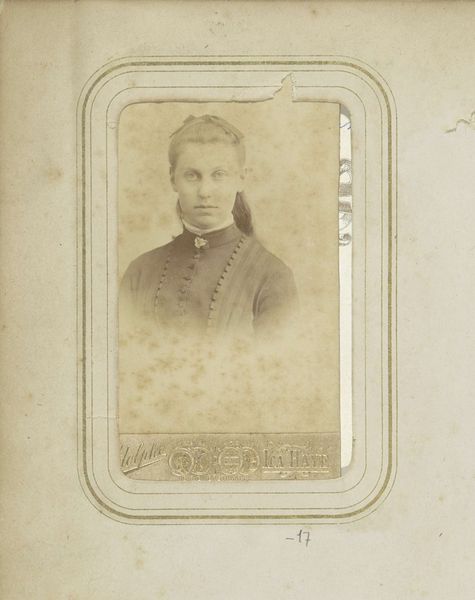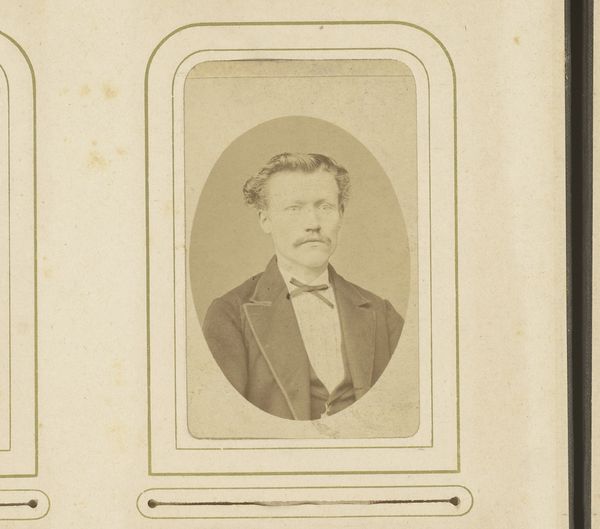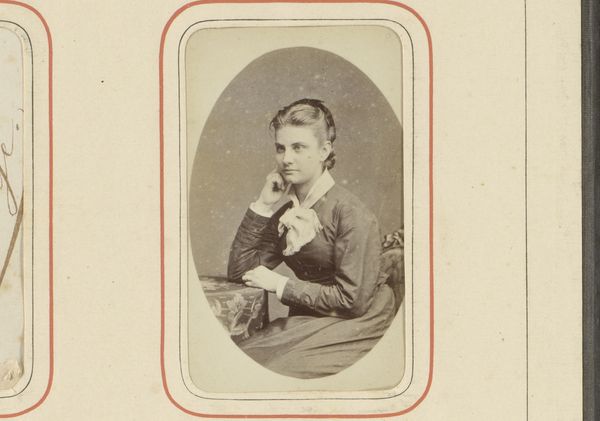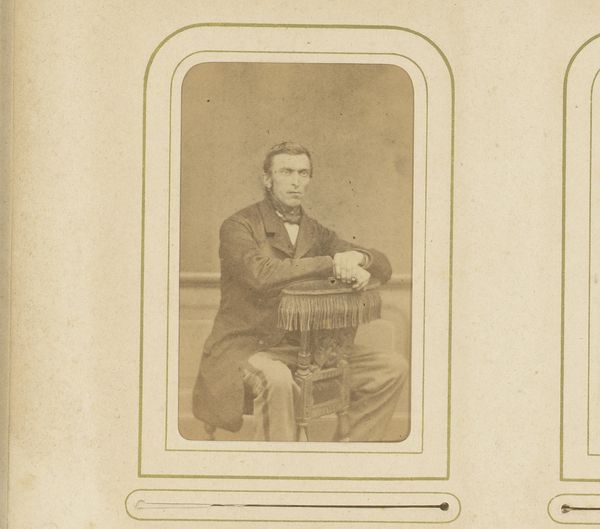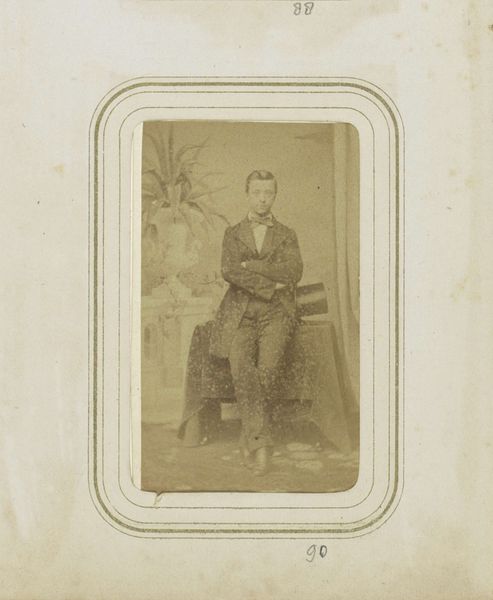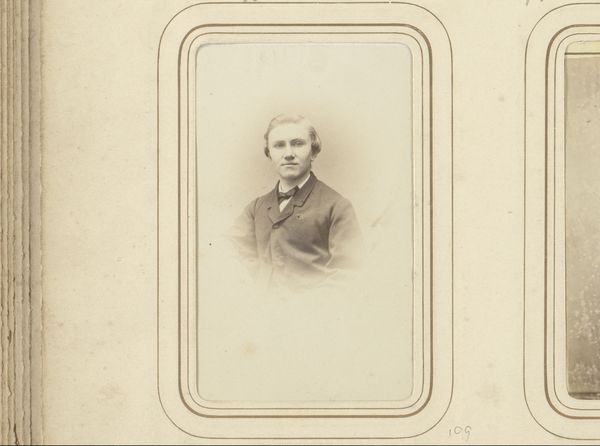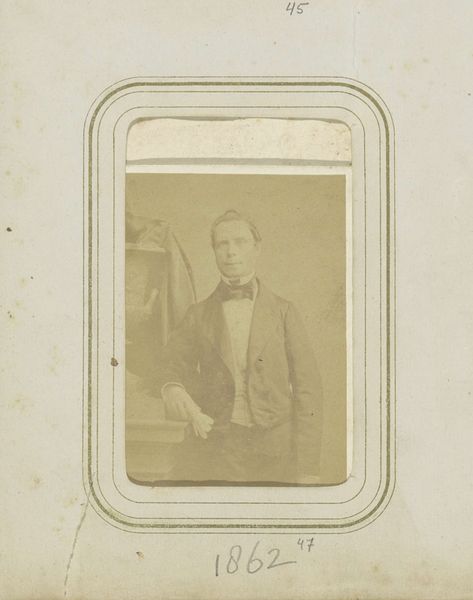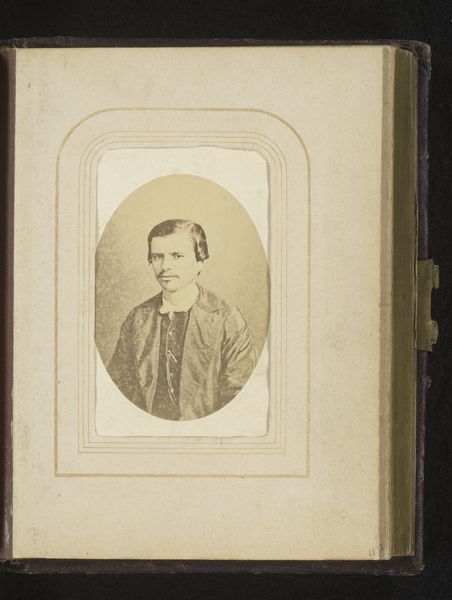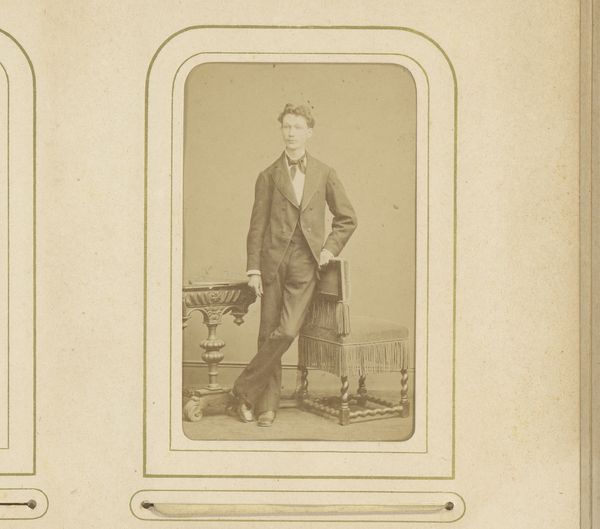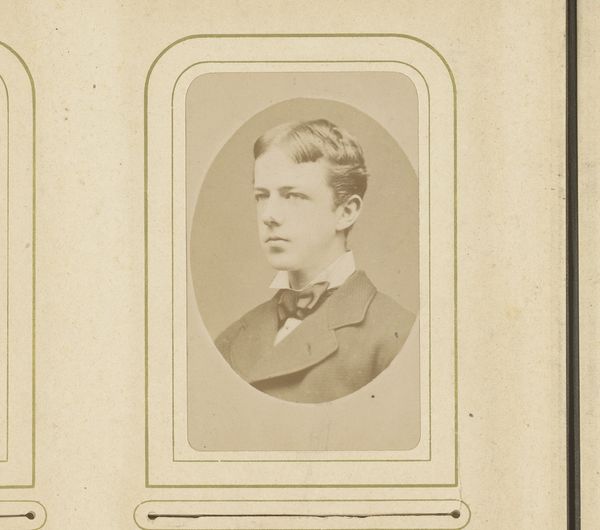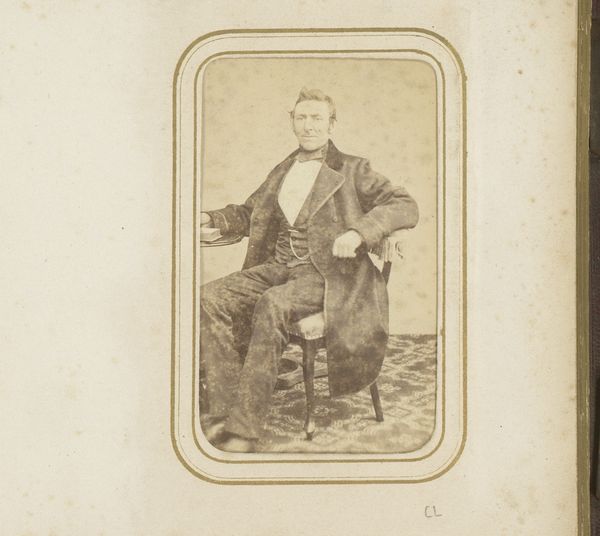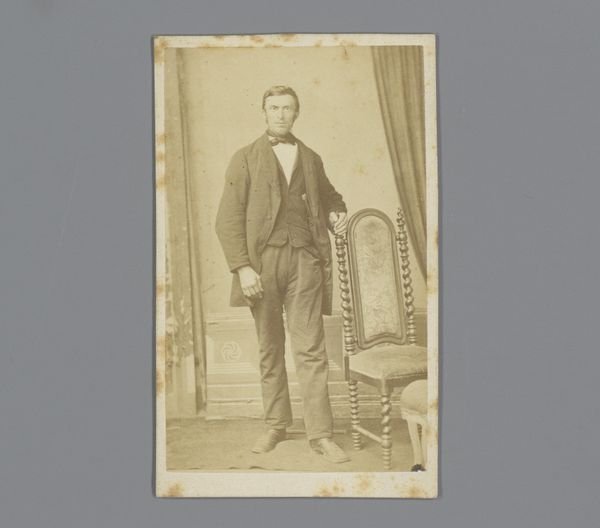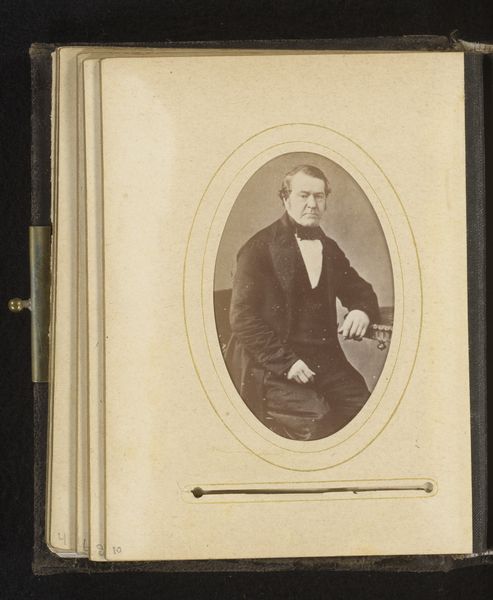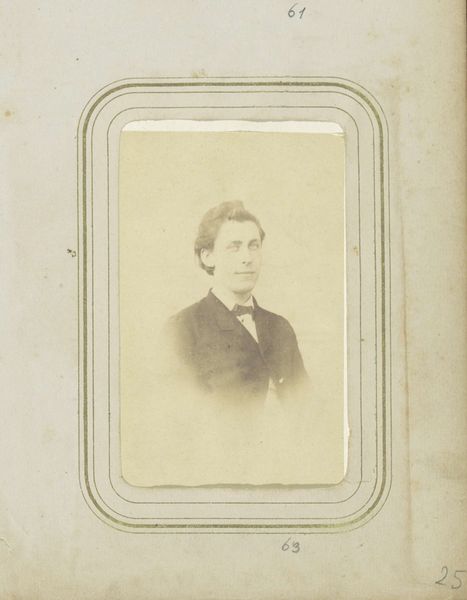
Fotoreproductie van een gravure van een portret van Friedrich von Schiller c. 1870 - 1890
0:00
0:00
Dimensions: height 103 mm, width 63 mm
Copyright: Rijks Museum: Open Domain
Editor: Here we have a photogravure of a portrait of Friedrich von Schiller, dating from around 1870 to 1890. The Romanticism is palpable! What social or cultural echoes do you hear when you look at this work? Curator: I see echoes of Romanticism's engagement with history, but I also hear the rise of nationalism in the 19th century. Schiller, as a celebrated playwright and poet, became a symbol of German cultural identity. This image, produced decades after his death, serves to solidify that constructed national narrative. Editor: Interesting! So the image isn't just about Schiller the individual, but Schiller the symbol? Curator: Precisely. Consider the historical context: this portrait emerged during a period of intense nation-building in Germany. The medium itself, a photographic reproduction of an engraving, speaks to mass dissemination and the creation of a unified visual culture. Who do you think this image aimed to serve? Editor: It was probably geared towards an increasingly literate middle class eager to connect with its perceived cultural roots? It seems a pretty specific market, like creating celebrities today, yet this is being used to cement a social group and their power structure. Curator: Yes, and how does the portrait contribute to this? Note his posture, his gaze – averted yet determined. These visual cues contribute to the construction of a romanticized, almost mythical figure, reinforcing particular notions of German identity as intellectual, idealistic, and, perhaps, even a little detached from everyday life. It’s a political performance enshrined in visual form, isn't it? Editor: Absolutely. I came in thinking 'Romantic portrait' and now I see so much more! I had no idea how heavily symbolic these seemingly simple artworks could be. Curator: And the beauty is that there are always new layers to uncover, questions of whose history is being told, and how we might challenge dominant narratives. I appreciate you bringing attention to Schiller!
Comments
No comments
Be the first to comment and join the conversation on the ultimate creative platform.
